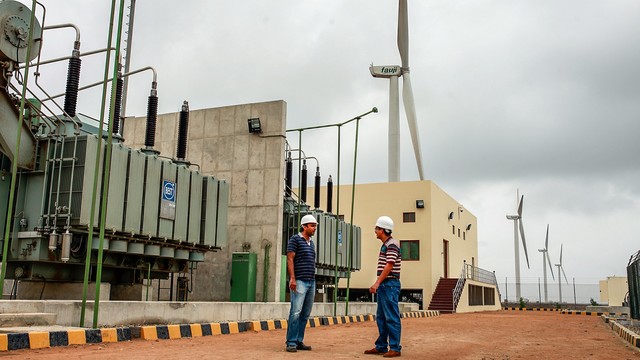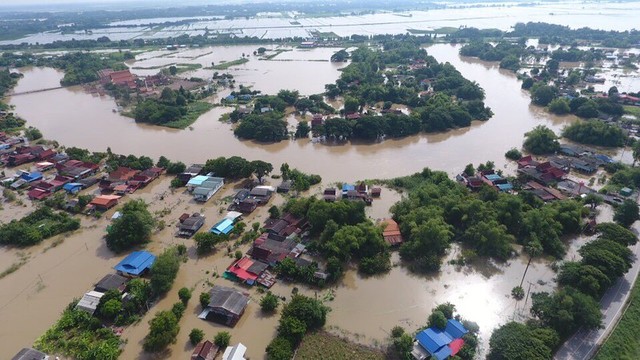How can business help boost access to energy for those who need it most?
From crowdfunding platforms to development banks, the private sector can have a big impact in low-income energy markets.


Crowdfunding secured individual investor funding for a programme to provide solar lights to people without electricity in Zambia and illustrates how the private sector can help deliver access to energy for those who need it most. Photo: Copyright, Simon Berry
Dreams of an unlimited supply of clean, cheap electricity from nuclear fusion crept a step closer to coming true last month when the £13bn Iter project announced it had gained critical final approval for the design of a key component. If all goes well for this collaboration of 34 nations, a decade of building work will start, followed by a further decade of testing, and then the mega-reactor will be ready to roll.
Some people think that's too long to wait. While the Iter scientists attempt to solve the world's energy problems by emulating the nuclear fusion reactions of the sun, enterprises on the ground are capturing the actual sun's rays and changing peoples' lives right now.
One way such businesses can get off the ground is with crowdfunded investment, offered by platforms such as SunFunder. The crowdfunding organisation has just secured $20,000 (£13,000) from 146 individual investors around the world to invest in SunnyMoney's programme to provide 1,200 solar lights for people without electricity in Zambia's copper belt. To date, it has empowered 22,757 people in developing countries through its online platform, which can secure investment from multiple sources in a matter of days. And they are not alone – Kiva, Microplace and Mosaic are also demonstrating that crowdfunding can attract energy investment to the world's poorer communities.
Crowdfunding is just one way that private investment is helping to deliver access to energy for those who need it most. The challenge is immense. One in five people lack access to electricity; while about 40% have no access to clean cooking fuels, suffering potentially fatal respiratory problems as a result. According to the International Energy Agency (IEA), nearly $1tn of investment is needed to achieve universal energy access by 2030. This is just 3% of estimated total investment required to maintain and expand energy infrastructure at current rates. Moreover, universal access would only increase global energy demand by 1% and CO2 emissions by 0.6% in 2030.
Donors and governments seek to stimulate private investment in low carbon development and universal energy access, through programmes such as the UN Sustainable Energy for All initiative. Yet most private sector energy investment in emerging markets is directed towards large-scale on-grid electricity infrastructure.
This is a welcome boost to energy access, but such investment rarely reaches the urban poor or rural communities. On a positive note, this presents a potentially huge market opportunity for investors willing to take the risk in decentralised energy access.
There are opportunities for the private sector to get involved though. For example, entrepreneurial development bank FMO leverages private sector investment in emerging markets. In larger-scale energy projects it takes on higher risk and partner with commercial investors and the bank uses government funds for projects 0.5 to 4 million euros such as small-scale rural electrification, solar lamps and solar cells. It offers a convertible grant, which can be converted into equity or a loan if a project is successful. FMO also supports micro-finance organisations, for example enabling farmers in Cambodia to buy bio-gas digesters.
Another source of funding for low-carbon projects is carbon finance – from public or private funds, the Clean Development Mechanism or Voluntary Carbon Markets. The IFC's medium term Green Bonds have raised $2.2bn to date for renewable energy projects and energy efficiency in emerging markets.
The impact investment landscape is evolving. Angel investors and high net worth individuals can respond to smaller, one-off deals and early-stage, high-risk investments. Loans can be managed through social enterprises such as Village Infrastructure. Angel investors often provide both money and support for their portfolio, which is crucial for early-stage investment. Angel networks such as TONIIC and Go Beyond allow angels to co-invest, while sharing due diligence and research into new deals. Innovation accelerators such as Embark and Ennovent are another way to link investors with investment opportunities and provide incubator services to local enterprises.
Risks are falling. Mobile phone technology has transformed payment systems, making revenue collection less risky. Eight19, for example, has a pay-as-you go model for solar home systems, based on a scratch card activated via mobile phone. Another challenge is distribution. SunnyMoney has been pioneering micro-franchising – selling solar lights in sub-Saharan Africa through networks of franchises.
Other energy companies have established charities to promote energy access in low-income markets, such as the Shell Foundation and Renewable World. Major energy companies themselves are also delivering energy access to the poor as community development projects. An example is the Bonny Utility Company, which uses gas generated by a liquefied natural gas project to power a community in the Niger Delta.
There are multiple ways that the private sector is supporting the development of low-income energy markets. As these markets mature, we trust that better energy access will ultimately lead to improvements in people's health, livelihoods and resilience.
This blog was first posted on Guardian Sustainable Business and was written in collaboration with Village Infrastructure.
Find out more: read this IIED briefing on innovative business models that are Stimulating quality investment in sustainable energy for all.



